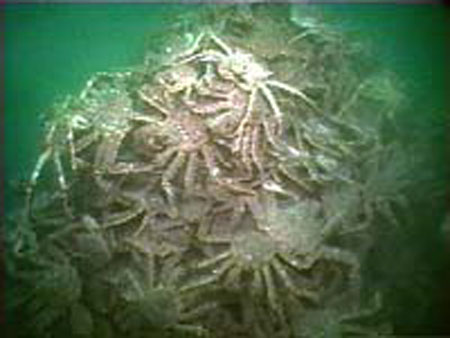
Every year, the Alaska Department of Labor devotes one monthly report entirely to fisheries issues. They run the data on how many people the fishing industry employs and how much revenue it brings in.
The report found that the number of people commercially harvesting fish has gone down over the past five years. In 2005, the monthly employment average was about 7,500 people. Last year, it was under 7,000.
Rob Kreiger was one of the economists who helped put together the report. He’s not quite sure why this decline happened. He says that the department didn’t examine potential causes like the national economic downturn or the implementation of Alaska-specific fisheries policies, like rationalization.
“[Rationalization] certainly might be an external factor which affects things, but I couldn’t say whether it’s a driving force or not,” says Kreiger.
Kreiger did point out that the amount of money Alaska’s fisheries bring in had gone up in the past few years, though. The total dockside value of the state’s fisheries last year was $1.6 billion.
The Aleutian and Pribilof Island region was the most productive area, contributing $473 million to that amount. About 4,700 commercial fishermen were employed here.
The next highest earner was Southcentral, bringing in $265 million and employing nearly 8,000 permit holders and crew members.
The Department of Labor found that the region with the most fishermen was Southeast, with about 9,000 fishermen. The value of their catch was about $200 million.
Bristol Bay, meanwhile, has shown the most growth. Earnings there went up from about $100 million in 2005 to $170 million in 2010.
Kodiak was highlighted as being one of the most stable regions for fishermen. The island has had about 800 permit holders for the past five years, with about 2,500 crew members.
Overall, employment and revenue figures did not show any erratic fluctuations. Kreiger says that the fishing industry continues to be a reliable employer of people across the state of Alaska.
“I guess there were no real surprises this year for me,” says Kreiger.
The report did not contain information on how many fish processing jobs exist in Alaska.
agutierrez (at) alaskapublic (dot) org | 907.209.1799 | About Alexandra




